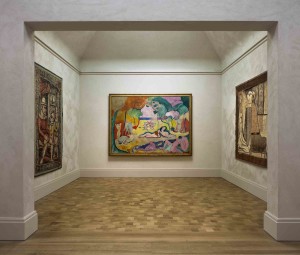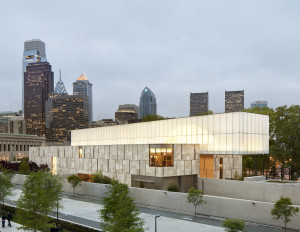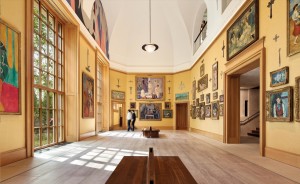|
One of my favorite small art museums, and one in which hardwood plays a crucial role, is the Barnes Foundation in Philadelphia. It’s home to this country’s finest collection of French Impressionist and Post-Impressionist paintings—major works by Cézanne, Van Gogh, Seurat, Matisse, Renoir, and Picasso—along with miscellaneous Old Masters and carvings by African tribal artists. This dazzling cornucopia was assembled last century byAlbert Coombs Barnes (1872–1951), a quirky physician and businessman with highly idiosyncratic views on how art should be displayed and enjoyed. He established the Barnes Foundation with the strict legal proviso that none of his paintings or objects could ever be sold, loaned, or removed from the elaborate installations he contrived for them in his Main Line mansion. So when for financial and other reasons it became imperative to move the collection to central Philadelphia, the court agreed to the relocation provided the collector’s displays be strictly maintained in the institution’s new home. New York–based architects Tod Williams and Billie Tsien were chosen to design the new Barnes Foundation museum, which opened in 2012. The husband-and-wife team has done a superb job of creating a beautiful modern limestone and glass building that nevertheless satisfies the legal requirement to reproduce the old galleries exactly. The architects have even used the ochre-colored burlap Barnes specified for the original gallery walls, a color that works so beautifully with the paintings it seems surprising that it isn’t widely copied elsewhere. |
Contributing to the galleries’ serene atmosphere is the extensive use of white oak for the windows, millwork and, especially, the extraordinary floors. In fact, most of the museum—the galleries, library, lower lobby, and 150-seat auditorium—features quarter-sawn white oak floors. More than 30,000 square feet of flooring was manufactured for the Barnes using American white oak from Frank Miller Lumber, an Indiana-based mill specializing in quarter-sawn hardwoods. The flooring was supplied as solid ¾” x 3″ x 6′ custom milled strips, and 101,000 solid ¾” x 4″ x 4″ precision squared and end-trimmed blocks. Together, the strips and blocks were used in the galleries to create stunning custom floor patterns. I particularly love the floors made of blocks, which create a soft, scintillating effect that mirrors the play of color and light in the Impressionist and Post-Impressionist paintings on the walls. This is most evident in a small room that houses one of the icons of early modernism: Matisse’s Le Bonheur de vivre (The Joy of Life, 1906). The oak-block floor seems to dance under the gaze of the monumental canvas whose vivid yellow-and-ochre tones and dynamic fluid lines animate the intimate space.  Matisse’s 1906 painting, Le Bonheur de Vivre (The Joy of Life), hangs above a floor of solid white oak blocks. Photograph by Tom Crane.
The Barnes Foundation Tod Williams Billie Tsien Architects Frank Miller Lumber Company, Inc. |





